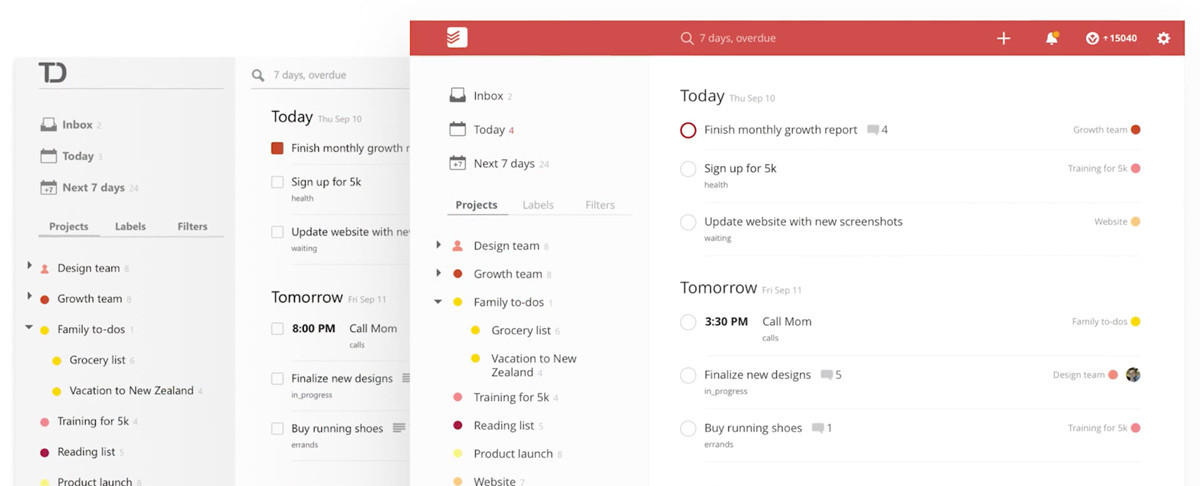Personal Project Management (How-to with Tips from PMs)
Author: Zenresume Editorial Team
Updated on January 22, 2021
You need to get something done. You set a date. At some point you actually start working on it.
The deadline flies by. You’re still at it.
Why did I ever think that deadline was reasonable?
And how the hell did this get so expensive!
Ever heard of the “planning fallacy”?
It’s basically a catch-all term for every mistake possible: underestimated costs and complexity, not accounting for unknowns, and being overly optimistic about external circumstances.
We’re all guilty.
Get this: in an experiment, Americans were asked to evaluate the expected cost of remodeling their kitchens.
The average estimate? $18,500.
The actual mean cost? Almost $39,000.
Try explaining that to your bank!
Again, we’re all guilty, but there are people who seem toalwaysbe on top of things. They’re actually paid for doing just that.
Project managers.
Do they have superpowers? Are they lucky? No, not at all. They just happen to know some things you don’t.
And they’re about to teach you those skills. (And, as a bonus, recommend some of the coolest, easy-to-use productivity apps to help you manage your personal life like a pro.)
1
Understand why we all suck at planning
Step one: realize what’s been stopping you so far.
In a word: overconfidence.
It’s best explained by a concept of WYSIATI (What You See Is All There Is) coined by one of the most exceptional psychologists of all time, Nobel Prize winner, Daniel Kahneman (Everyproject manager I spoke with mentioned this theory).
You see, when we make plans, we tend to focus only on the “known knowns”—phenomena we’ve already seen and can anticipate.
What we forget about, though, are:
- “Known unknowns”—things we know might happen, but we ignore them because we hope they won’t happen (or we’ll fix them later.).
- “Unknown unknowns”—events that we don’t know about and cannot predict.
If what you see is all there is, you better see it all.
So—
2
See the Board
Each thing you do actually requires you to do a lot of smaller things. We don’t think this way about walking the dog, making tea, or sending an email to accounting.
But we don’t think this way about more complex projects either.
In the search of a solution to that problem, I reached out to Shai Shandil, an Agile/Scrum management coach, and a founder ofsoftsolutions.
His answer?See the board.
No, this isn’t a zen koan He meansliterally.
The easiest way to combat a mounting pile of tasks is to have aphysicalboard that holds all these tasks.
It’s called akanban board and was first used by Taiichi Ohno at Toyota.
Shai let us seehisboard he used for moving home:

(He’stotally un-high-tech about it!)
Notice two things—
First of all, the tasks on Shai’s list are very specific.
For instance, it’s not “clean the house.” Instead, it’s divided into smaller, controllable tasks:
- “Vacuum house,” “Clean between oven glass,” “Wipe down kitchen,” (already done).
- “Clean shower,” “Clean drains,” “Bleach kitchen blinds,” “Mop house,” (to do.)
Secondly, allstakeholders(be that your spouse, children, or flatmates) can immediately learn what the status is.
“It’s a BRILLIANT way of stopping nagging because the answers to allHow are you going with X?types of questions are so readily available,” Shai says.
I know what you might be wondering—
3
How much should I break down my tasks?
That’s a question many kanban users ask and, ironically, most kanban tutorials rarely answer.
For good reason. There’s no one-size-fits-all answer. You need to beagileand learn what works foryou.
But there are two general guidelines:
Dependency
One of the main reasons work gets delayed is the dependency on other people. When breaking up your work, make sure that it’s clear which item requires someone else to take action.
At a given point, the number of external “stakeholders” your task is waiting for should not exceed two.
What if it does?
That’s a signal you should break down the task further, into lower-level items that don’t rely on that many dependencies.
Time
This factor ismuchmore speculative, but if you need a basic rule of thumb, here it is:
- The minimum task size is 30 minutes.
- Aim for a maximum of one workday—for sanity’s sake, you don't want work to spill over to the following day.
It will take time and practice to determine what goes on the board. The good thing is, after a few iterations, you’ll notice things flow smoothly from left to right.
You’ll see what needs to get done first, do it, and move on to the next task.
Plus, once you see movement on the board, you’ll learn to manage your time to keep things moving. Got a time slot for X? Do X. Not enough time before your date? Do Y.
Shai gave another personal example to brilliantly illustrate that:
“I never iron more than three items at a time. It’s less about how much it takes me to get it done. It’s more about how much time it takes my wife to get date-ready. All of a sudden, I no longer have to set up an “ironing” task every week, a saving of an hour for myfreetime.”
4
A continuous flow of tasks
Notice that, in Shai’s kanban board, there’s no “backlog” column.
That’s because kanban management doesn’t concern itself with time boxes: work comes in, gets worked on, and gets finished. That’s it.
This approach seemed surprising coming from Shai who specializes in Scrum—a methodology focused on timeboxed iterations called “sprints.” But Shai suggested that the simplicity of kanban is usually way more fitting for personal or family needs.
Another PM, Leigh Espy, Project Manager at FedEx and owner ofProjectBliss.netshares Shai’s approach.
Three years ago, she encouraged her then 10-year old daughter to start using a simple kanban board—made from just a whiteboard and Post-It-Notes, with three columns “Not Started,” “Doing,” and “Done.”
“The simplicity lets my daughter focus on getting the work done and moving the task through the stages of execution very quickly. Having a list of chores to pick from gives her a sense of control,” Leigh says.
“She still has to do the work, but she can determine in what order. And she's formally taken ownership and committed to the task. Once she's finished the work, she moves the task to the ‘Done’ column and picks the next item. This is also helpful for me—it lets me know what she's actively working on,” she explains.
A child-friendly, glorified to-do list? No, it’s more than that.
First of all, we rarely know when we’ll have a bit of free time. The kanban board lets you queue tasks, prioritize them, and get them done when you have an opening.
Secondly, committing to using a board will let you see patterns. You’ll notice repetitive tasks, identify which ones take longer than expected, and soon you’ll streamline everyday processes (remember Shai’s ironing example?).
But proper project management is notonlyabout getting things done more efficiently. It’s also about working towards an important objective—
5
Whatever you plan, think about the big goal
In the end, we all do things for some grander reason.
Forsomeone,assomeone.
Every Sunday, Scott Perry (a PMP-certified Project Manager by day, and a baseball blogger atCatchersHome.comby night), together with his wife, holds “the weekly marriage meeting.”
They open up their very analog Moleskine schedulers and go through their plans for the upcoming week.
But that’s not all.
“Another thing I do in my personal weekly planning is to integrate aRole Mapinto my plans. It’s a structured blueprint of everyroleyou have in your life (think Employee, Son, Husband, Father, Little League Coach, etc.) thatconnects you with your weekly plan so that your actions are intentional, not reactive, supporting further development of each role. This way, I can spend time on things that count and not on ‘busy’ work that doesn’t really matter.”
Ever found yourself elbows deep in something, only to realize you’re not getting closer to what youactuallywant to achieve?
Exactly.
Busyis a drug. Makes you feel good. But being busy doesn’t imply being productive.
Always ask yourself: what’s the actual outcome of what I’m doing? Is there any value in it? Are the steps I’m taking bringing me closer to the end goal?
Make reality checks a habit. Kanban or no kanban.
At the end of the day, good project management is about making the right choices. You know, the ones that actually pull you closer to the desired outcome.
And for the final word... Here’s how to boost your efficiency with apps:
6
5 top apps recommended by PMs for increasing your productivity
1.Omnifocus

An indispensable daily tool for organizing your homeandprofessional tasks.
It allows you to easily group your tasks by priority, complexity, and dependencies—the time of day, your location, other people, etc.
Available for iOS and MacOS users only.
2.todoist

A super easy way to seat daily and weekly goals and analyze your productivity. Beautiful visualizations will help you notice trends in your productivity. Not to mention Todoist karma points, streaks, and levels which will gamify your life and make you want to chase numbers!
(It’s also very easy to integrate todoist with your Gmail and Google Calendar.)
3.Pocket

The easiest way to save cool reads and other stuff you find online. Store them in your Pocket and revisit when you have some free time—on your computer or mobile.
4.Trello

Love the idea of a kanban board but can’t be bothered to set up a physical one?
Enter Trello. A straightforward, easily accessible online kanban board you can use on your own or with your family.
5.Audible
Last but not least.
Reading is a joy, but sometimes you can’t really sit down and stare at text. Get your daily dose of literature as you walk your dog or clean the tub.
So, what do you think?
Enjoyed the PMs’ tips? Maybe you have your own productivity hacks you’d like to share? Drop me a line in the comments, and I’ll be sure to get back to you right away. I can’t wait to hear your thoughts—Let’s chat!